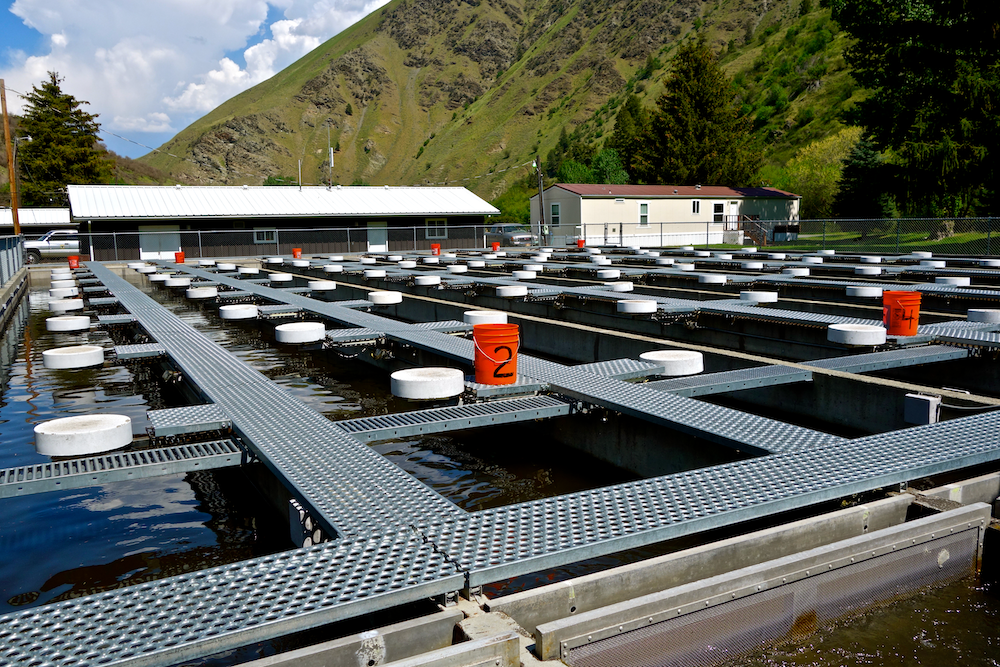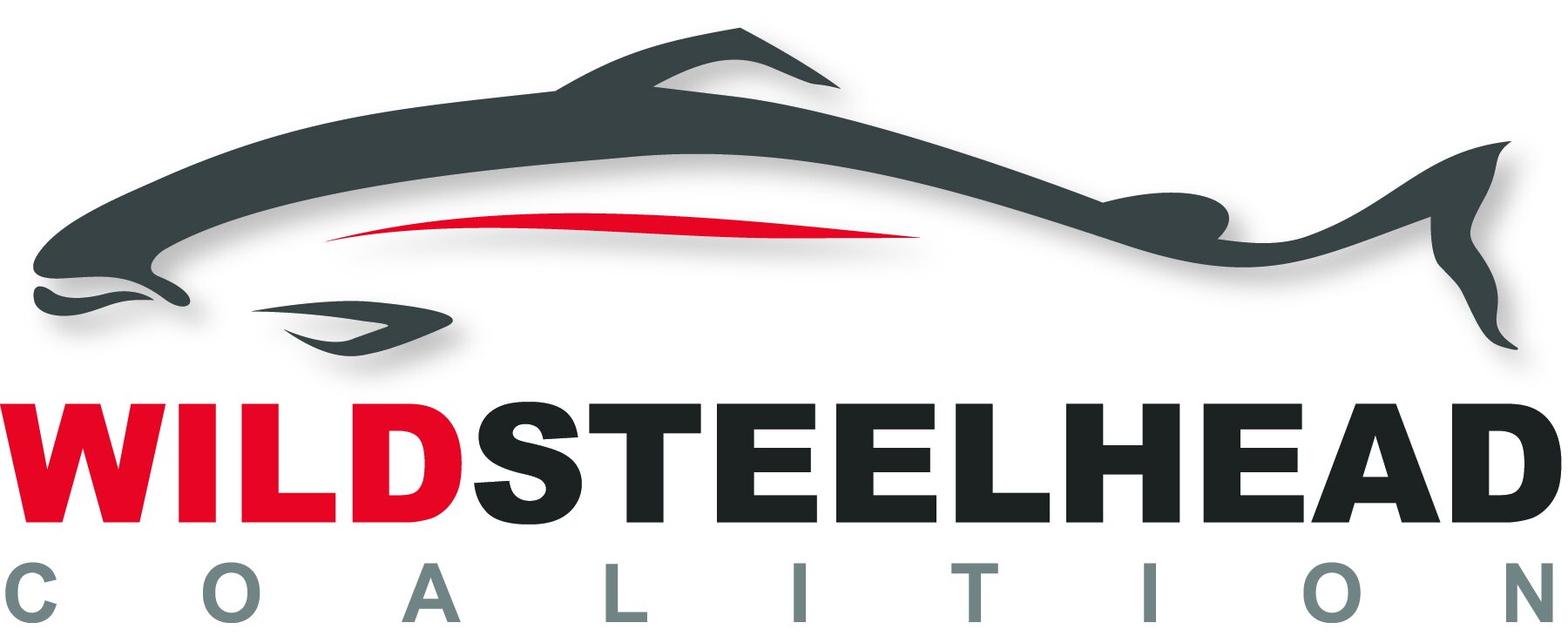
The Problem of Domestication
Since the middle of the 20th century, hatcheries have been widely used to supplement sport and commercial fisheries that are experiencing wild steelhead decline. While these hatcheries were created to replace the thousands of wild steelhead disappearing from rivers up and down the West Coast, in an ironic and unfortunate twist of fate, these hatcheries actually serve as a further driver of wild steelhead decline.
According to the Washington Department of Fish & Wildlife (WDFW), which oversees much of the state’s hatchery operations, hatchery steelhead pose a significant genetic and ecological risk to wild steelhead. Hatchery fish negatively impact wild steelhead through increased competition for food and habitat, heightened predation, genetic degradation, and decreased spawning success. All of these factors imperil the future of wild steelhead populations, but the genetic changes are a particularly pernicious threat to the survival of the species.
“While hatcheries were intended to be a solution for wild steelhead loss, for nearly a century they have actually been a driver of deeper wild steelhead decline.”
Hatchery fish experience a fundamentally different rearing environment than their wild counterparts, and their genes change to adapt to this domestication. In the wild, natural selection acts strongly throughout the life of a fish, allowing only the fittest individuals to survive, breed, and pass their genes on to the next generation. Hatcheries relax or alter these selective pressures in almost every phase of a salmon and steelhead’s life. From juvenile rearing behaviors, brain development, redd site selection, life history diversity, and egg size, the hatchery environment produces fish that are inferior to their resilient wild counterparts.
As a result, when hatchery steelhead interbreed with wild steelhead, they degrade the genetics of the offspring, making them far less likely to survive at each stage of their lives. Research has repeatedly shown that even a single generation of hatchery domestication can reduce the reproductive success of steelhead and salmon by up to 70%. In hatchery stocks that have been domesticated for several generations, genetic degradation has driven reproductive success to almost zero. While domesticated hatchery stocks, especially those originating from outside a particular watershed, are typically the most destructive to wild populations, even the offspring of broodstock programs show declines in fitness and viability after only a single generation of breeding in captivity.
For many years, the inherently damaging impacts of hatcheries were exacerbated by a number of common, misguided practices. Perhaps the most problematic practice was selecting a few strains of steelhead, such as Chambers Creek fish in Washington, and stocking them widely in watersheds outside of their original home waters. Wild steelhead resilience is largely predicated on the fact that over millennia they have perfectly co-evolved with their habitat to thrive in their natal waters. However, when out-of-basin hatchery fish spawn in these rivers, they forever dilute the genetic lineage of these wild fish and make their offspring less equipped to survive.
When the genetic damage of the out-of-basin hatchery fish was finally recognized, some hatchery managers started taking wild fish out of rivers in order to breed steelhead they believed would be better suited to a specific watershed. While much has been made of the importance of using these wild broodstock programs to protect “native genetics”, these hatchery programs are far from a panacea. Just like other domesticated stocks, the hatchery environment reduces fitness and survivability among these broodstock fish’s offspring, and the descendants of these fish demonstrate measurable changes to their genetics within a single generation of breeding in captivity.
The ecological impacts of hatcheries are also increasingly being recognized as a cause for concern for wild populations. Production hatcheries release several billion hatchery salmon and steelhead each year, which unleashes a slew of problems for wild steelhead. For example, despite being less genetic fit, these juvenile fish are often larger than their wild counterparts because of the mild conditions and abundance of food at the hatchery, which enables them to outcompete wild fish for finite resources. Additionally, these hatchery fish increase predation on wild fish two ways: hatchery fish will become resident rainbows that prey on juveniles and when large numbers of hatchery fish are dumped into a river, they attract predators, which also prey on wild juvenile steelhead.
Hatchery Reform
If we hope to recover wild steelhead, hatchery reform must be a part of the equation. The best science tells us that we must dramatically reduce the number of hatchery fish spawning in the wild and that we must eliminate hatchery programs altogether in watersheds where habitat conditions can support robust populations of wild fish. We are seeing these wild steelhead sanctuaries in the form of Wild Steelhead Gene Banks, which are rivers devoid of hatchery steelhead where wild steelhead have an improved chance for recovery and crucial, basin-specific steelhead genetics are preserved for the future. In Washington, some rivers such as the Elwha, Sol Duc, and Nisqually have already been designated as Wild Steelhead Gene Banks as a part of the Statewide Steelhead Management Plan.
It is important to note that steelhead hatcheries are also enormously expensive to operate. Every year, taxpayers spend hundreds of millions of dollars operating hatcheries that endanger wild fish and contribute to diminishing returns. Therefore, we believe taxpayer money would be better spent on productive and durable steelhead recovery solutions such as habitat restoration, effective fisheries management, and removal of fish passage barriers. These are investments in the resilient wild fish most capable of supporting sustainable fisheries in an uncertain future.
This investment strategy is supported by science and backed by what anglers experience every time they step into a healthy steelhead river. When we look at the watersheds where steelhead populations are strong or showing signs of recovery, the factors are clear: hatchery fish are absent and wild steelhead and their habitat are protected by resource managers. This is the path forward to ensure a future where wild steelhead thrive and quality angling opportunities abound.
We are working hard to create this steelhead-abundant future and strongly believe that collaboration between anglers, agencies, tribes, conservationists, and the public is vital to achieving it. To that end, WSC is committed to forging powerful coalitions where respect for the diverse needs and perspectives within these complex partnerships leads to pragmatic solutions that benefit wild steelhead, the watersheds they depend upon, tribes, local communities, and all anglers.






